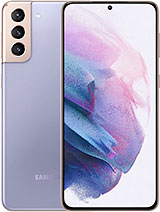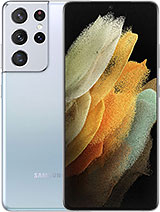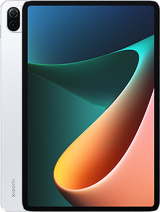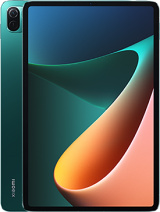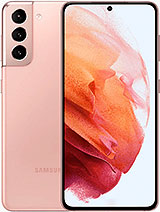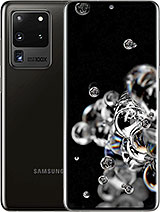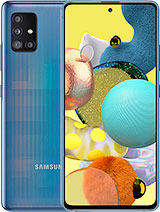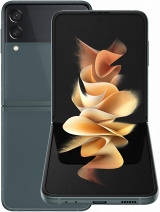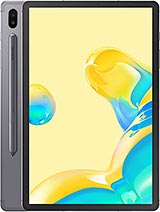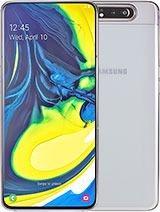Galaxy S21 Ultra - Exynos vs Snapdragon. By Mrwhosetheboss
Okay this is a European galaxy, s21 ultra, which means it's powered by Samsung's own Enos 2100 chips. But this is a US version of the exact same phone powered by Qualcomm snapdragon 888 chips, and I've got some bad news. So naturally, when I got these two phones, the first thing I did was to just slap them on a table and open a benchmark because with last year's s20 ultras, the Enos version of this phone was just bad. It was at least 10 slower than the snapdragon equivalent, and so a benchmark would be an almost instant way to see if they fix that gap. So on an tutu, which has kind of become the standard performance test, we get about 650 000 on Enos, which, to be honest, is a good score. But then we get 690 000 on snapdragon, which puts that phone about six percent ahead, but to make sure that we get the best possible most reliable reading, I decided to run every benchmark, so we jumped into 3dmark where actually the gap was even greater 5303 versus 5699 or in other words, seven percent better.
On snapdragon. I then run GFX bench, which is basically just an absolute truckload of graphics simulations and, if you average out all of these, the Enos was at 66 frames per second snapdragon at 70, which is again a six percent lead. But, interestingly, if we move over to geek bench, which is a little more CPU focused, it's about to draw snapdragon is a little higher. If you look at the single core performance, but Enos edges it out in multi-core and then finally, on pass mark, Enos wins 11 900 versus just over 11 500, a win of about three and a half percent. So if you average out all of these scores Enos, it is behind its behind by about three percent.
But if you think about where they've come from, that's fantastic, that's great, it looks like Enos has finally pulled it back. No, I will give Samsung this when these phones are performing at their best, almost nothing challenges either of them literally. The only way that I managed to show any real world difference was by pulling up a PlayStation portable emulator, which I remember six to seven years ago, would practically bring phones to their knees, but not just that. I had to run this emulator at 10 times the default resolution with every possible setting crank to the absolute max before I could actually start to see. Just one of these phones get a little choppy, I think on average the Enos was at about 27 frames per second, while the snapdragon was locked at a smooth 30.
, but this is where things get messy and if you are enjoying this video, then a sub to the channel would be bodacious. So, so far all we've actually done is looked at peak performance. We have run five different benchmarks. Yes, but between each of these there was a break where fun fact. I would actually take both of these phones and put them in a fridge just to bring the temperatures back down to normal, so that the next test we do after that wasn't affected, and that was the fairest way of answering the question we were trying to answer, which is what is the highest level of performance that my phone can reach, but what it doesn't do is answer, arguably the more important question, which is: what is the highest level of performance that my phone can sustain, and this is where Samsung has really struggled in the past.
Like you know, I mentioned that last year the snapdragon was about 10 faster than the Enos right. Well, that lead actually became 20. If you ran back-to-back intensive applications, the Enos was just getting so hot that it had to dial back its performance further, just to make sure it didn't fry itself so to find out if they fixed it. I charged both these phones up to 100. I opened up an tutu again, but this time ran it five times back to back with no breaks at all.
This causes a very real problem. I'm going to leave the full scores of these an tutu tests on screen now. In case you fancy a great bedtime read, but the important takeaway is that by the time we've run this test five times. The snapdragon is no longer just three percent or six percent ahead like it was when we were testing peak performance. It is now 19 ahead, and what makes this worse is that this is factoring in the fact that the snapdragon 2 has also lost a fair bit of performance.
As it's heated up, it's just that the Enos has lost a lot more like just to give you some context, the actual score that this phone is pulling in now 477 000, that is about the peak performance of a Galaxy S10 from two years ago, and you can bet your bottom dollar that this is due to temperatures, because before we even started any benchmarking at all, the CPU temperature of the Enos was already at 43 degrees Celsius compared to 33 degrees Celsius. That's a pretty alarming gap, considering that we haven't done anything yet. This is the phones sitting on idle and this gap only gets wider by the time. We finish that fifth an tutu benchmark, while the snapdragon is sitting there at 43 degrees Celsius, which is the same temperature. The Enos started at the Enos has now hit 68.
Or for those of you in the U. S.154 degrees Fahrenheit. This is not a healthy temperature. So at this point I'm kind of worried you know, competition in any market is just good for the consumer and if Samsung's Enos chips keep flopping we're just going to be left with Qualcomm and while Qualcomm do make good quality chips. If Qualcomm are the only people left in the market, they've got very little incentive to innovate, but there's more, do you want to know the most surprising side effect of having an Enos over a snapdragon? It's the camera.
Two different chipsets means two different image signal processors. So, even though these are the same phone, even though they have the same sensors and the same lenses, what your camera sees is being interpreted through a completely different pipeline. It's a bit like having two people who have the exact same set of eyes, but a different brain, and these side by sides should be a pretty good example of just how much difference this can make. So, for starters, snapdragon has higher color saturation, but I think more importantly than this, it can keep shadows brighter, and this is not just a stylistic thing. There is actually more information captured.
You get more texture on objects like flowers. This whole thing is just so weird like I'm using these two phones side by side, but they're meant to be the same phone, and yet here I am making a camera comparison as if they're two completely different devices, and to be honest, I actually noticed this disparity even more when zooming into things it's almost like the snapdragon is better able to upscale the end photo when you reach the extreme ends of it like 30 times that you see here, it's even true for image, previews. What you're seeing on your screen before you capture it just looks miles better on the snapdragon. It's almost like this phone is doing a whole layer of real-time noise reduction, which the Enos just isn't. I wouldn't say this is a huge deal because it seems like the end result from both phones, at least in low light, is pretty comparable, but it just makes the snapdragon feel a little more polished now.
The two things that I would give to Enos are that one it does seem to have better pixel smoothing if you crop all the way into a photo, which I guess kind of explains why you see less of the texture and two in video. It sometimes does a better job of reducing grain, but to be fair in 90 scenarios, snapdragon video looks more consistent and put together. I would love to tell you that this gap could be fixed with a software update, but let's be real. These phones are out in the public. Now they've had their big day, one patch they're, not early access products anymore, so I wouldn't bet on it now before you start writing a strongly worded tweet to Samsung.
I do have some good things to say about this, like battery life. Just going back to that prolonged an tutu benchmarking session, this also doubles as a battery test. So when we had those benchmarks first that took about 30 minutes, and it knocked the batteries quite significantly. But actually after that I carried on, I went to the play store. I downloaded the same game and played that for another 30 minutes, and then I hopped onto the camera recording 30 more minutes of full quality, 8k footage.
I could practically hear the batteries screaming, and they drew they both started on 100. They both ended on exactly 67, and so, given that last year's Enos was anywhere between 10 and 20 worse for battery life, I would call this a win and there's one final thing see a lot of the things that you do on your phone have patterns. It could be your schedule which apps you tend to check at which points in the day it could be how, when you're taking photos, your phone can use pattern, recognition to figure out if that's a cat or a ROG so that it can process the image in the best possible way. Now here's the thing: whenever there are patterns your phone can benefit from shifting the workload from the main bulky CPU cores to the smaller AI cores that both of these chipsets have. This is a bit of a simplification, but a good way to think about.
It is that your AI cores can learn, and they can figure out efficient ways to do things, whereas your big beefy CPU cores are better for tasks where you've just got to brute force, massive calculations, so where I'm going with this is that one AI is becoming more and more important, but also two. These phones have very different AI solutions, so using something called AI benchmark. We can take our phones through a whole load of processes that test them like image, identification, realizing that this is a barn or that this is a hermit crab like grouping similar images together recognizing text in a poster upscaling. The resolution of blurry photos all this kind of stuff and out pops, these two numbers 169 300 for the Enos and 130 400 for the snapdragon. I should probably caveat this by saying: I don't personally know how reliable this benchmark is, especially given how subjective it is to measure AI performance.
But what I will say is that I did repeat it a couple of times and I did get very similar results. I also tried testing Wi-Fi speeds on both, because technically different chips also means different, Wi-Fi modules, but, to be honest, the results would swing so wildly between tests that there weren't really any useful conclusions we could draw. So where does that leave us? Well, there are two main takeaways here number one is that the new Enos is better. It brings the peak performance much closer to the snapdragon, and it pretty much fixes any worry you might have about battery life, but the second thing is that the snapdragon is still the superior experience. It holds up its performance much better, even as you start to run back-to-back applications, but also the camera.
Experience is just way more polished. Okay, if you enjoyed this video, then do consider subscribing it's been a long time in the making. My name is Aaron. This is Mr who's, the boss, and I'll catch you in the next one. You.
Source : Mrwhosetheboss

